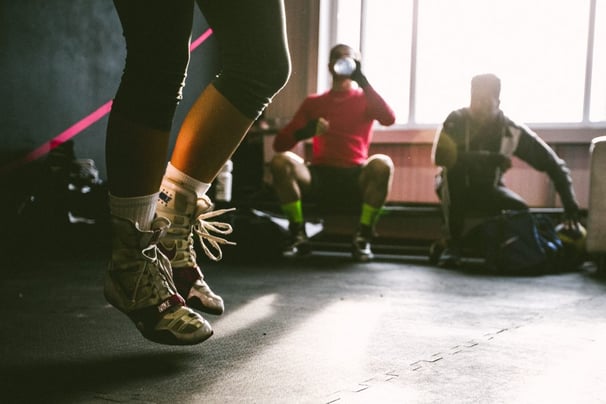
Editor's Note: This post is authored by Sean Craig, a current Graduate student and dietetic intern at the College of Saint Elizabeth.
Have you ever been halfway through a cycling class when you abruptly and uncontrollably cramped? Or have you been crushing a Bootcamp or TRX circuit and suddenly you felt flushed, fatigued, and dizzy? These are telltale signs of dehydration and/or electrolyte imbalances. What does this really mean and how can we prevent the dreaded occurrence? You might be thinking: “I can just grab the nearest sports beverage, right?” Not so fast. Can these flashy neon-colored solutions help in a situation like this? More importantly, what do they really provide for us?
From a basic standpoint, commercial sports beverages are rich in electrolytes and added sugars. There are seven primary electrolytes: sodium, chloride, potassium, magnesium, calcium, phosphate, and bicarbonate. These electrolytes work together to play a critical role in maintaining fluid balance, muscle function, nerve communication, neuron transmission, blood pressure regulation, and much more. Absent electrolytes, the body would cease to function, and maintaining a functioning body should be high on your list of fitness-related priorities. So, the next question is: what connects electrolytes and sports beverages?
Before, after, and during strenuous exercise, an individual’s electrolyte stores must be kept in-check to ensure peak performance and general health. During strenuous exercise, excessive sweating leads to a progressive loss of water and electrolytes (particularly sodium and chloride). In fact, performing 60 minutes of high intensity exercise can result in 1-2 pounds of fluid loss. To combat this fluid loss, many of us sip popular commercial sports beverages while we exercise to replenish lost electrolytes and rehydrate our bodies. However, these beverages do come with additional points of consideration. Many are rich in added sugar and, while some studies have shown sports beverages containing 4-8g of carbohydrates per 100ml of fluid have delayed the onset of fatigue in athletes, the beverages remain a significant contribution of calories. Additionally, some individuals may experience gastrointestinal discomfort depending on the carbohydrate composition.
Bottom line, there are better options out there than commercial sports beverages to replenish lost electrolytes. Be proactive: strive for a diet full of nutrient dense options that are rich in naturally occurring electrolytes. If you anticipate a particularly strenuous workout resulting in heavy sweat losses, consider electrolyte replacement therapy coupled with ample water.
Lastly, the grocery and beverage market is continuously evolving and offering up new and exciting electrolyte replacement products including teas, waters, and other beverages. If you’d like to learn more about this topic, consider meeting with a professional registered dietitian, who can offer their expertise and guide you through a safe and hydrated approach to fitness.
Sources
- Kovacs, M. S. (2006). Hydration and Temperature in Tennis - A Practical Review. Journal of Sports Science & Medicine, 5(1), 1–9.
- Jung, A. P., Bishop, P. A., Al-Nawwas, A., & Dale, R. B. (2005). Influence of Hydration and Electrolyte Supplementation on Incidence and Time to Onset of Exercise-Associated Muscle Cramps. Journal of Athletic Training, 40(2), 71–75.








Leave A Comment